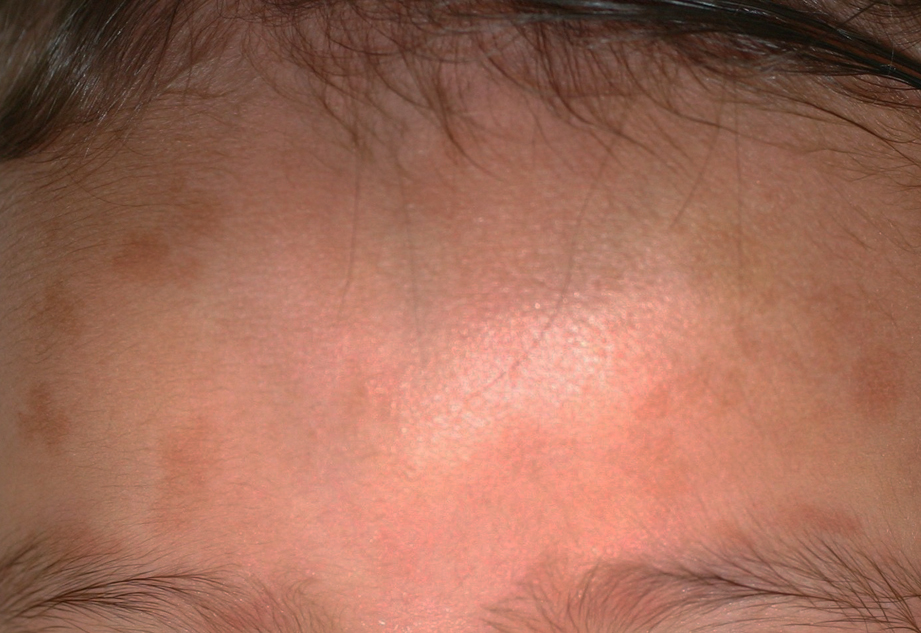Idiopathic frontal hyperpigmentation.

Downloads
DOI:
https://doi.org/10.26326/2281-9649.30.4.2167How to Cite
Abstract
Background. A new infancy-onset facial hyperpigmentation has been recently described. The etiology is still unknown, but the histopathological findings suggest a new form of acquired dermal macular pigmentation (ADMP) of unknown etiology.
Methods. We performed a retrospective observational descriptive study among children tended in the Dermatology Department at Hospital Universitario de Fuenlabrada, from March 2006 to March 2015.
Results. Three male and four female patients were assisted, aged from 6 to 24 months (mean 12 months, median 9 months). All of them were fair-skinned. Previous application of topic products or preceding inflammatory lesions could not be proved. One of them presented a solitary mastocytoma and another one showed four café-au-lait macules. Peutz-Jeghers syndrome family history was noticed in a third different patient. Histopathological analysis, performed in two cases, revealed melanocyte hyperplasia. During the 6-12 follow-up months, the lesions remained, but tended to ameliorate. Only three patients completed a topic treatment with 1mg/g methylprednisolone aceponate, showing no changes in lesions.
Limitations. Patient’s age hampered the obtention of biopsy samples in most of the cases.
Conclusion. We present a small series of seven-cases idiopathic frontal hyperpigmentation series. We suggest this entity to be included in the umbrella term ADMP.
